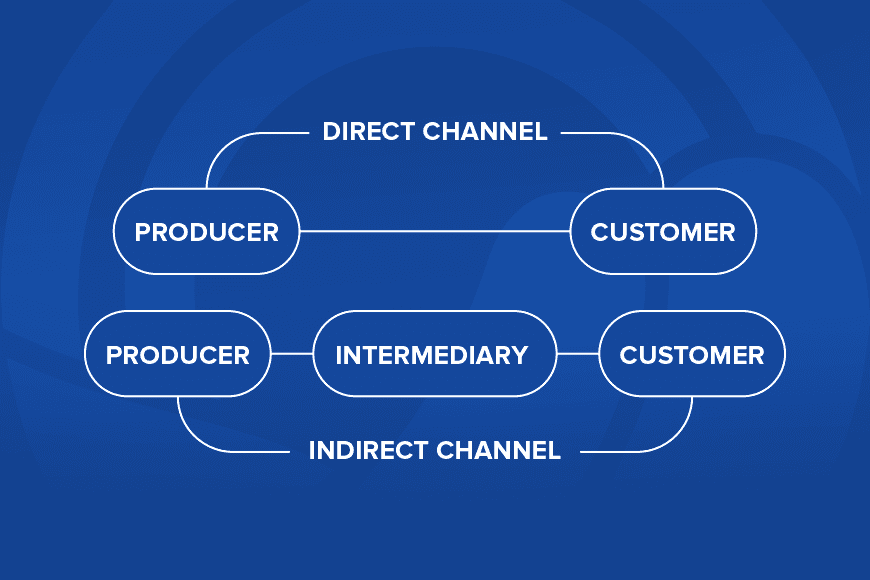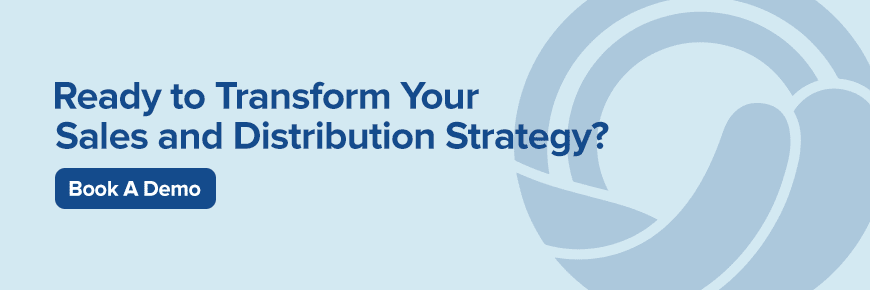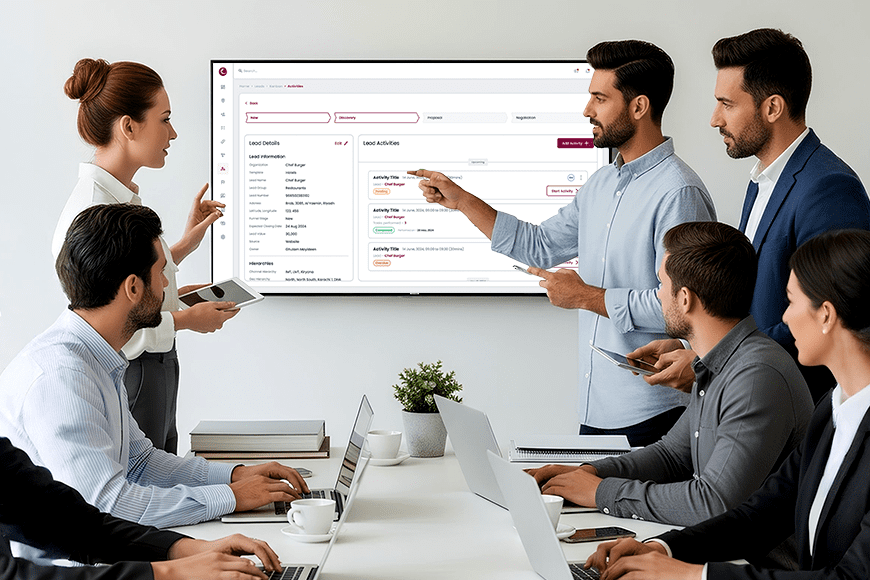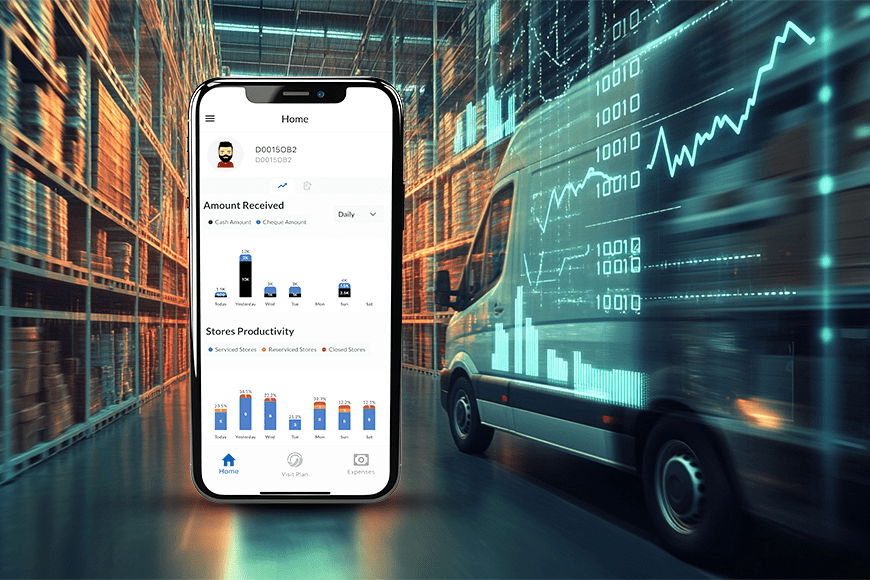Do you ever wonder why some products dominate store shelves and online platforms while others struggle to make an impact despite being high quality? The answer often lies in the choice of sales and distribution channels.
For businesses, Sales and distribution channels are the bridges between products and customers. Choosing the right channel can increase customer satisfaction, cut costs, and expand your market reach. In this article, we will dive into all types of sales and distribution channels and how companies, especially CPG companies, can benefit from choosing the right one.
Sales And Distribution Channels – A Closer Look
At their core, Sales and distribution channels are the methods used by a company to supply products and services to customers and end users. These can include wholesalers, retailers, agents, and the internet.
While some businesses prefer to sell directly to their clients, others might use a retailer or wholesaler as an intermediary. Agents or brokers are also an option companies might use to assist in the transportation of products to distributors, who then sell them to customers.
For example, if you purchased the Samsung Galaxy S25, whether directly from the Samsung website or through your cellular network carrier, you interacted with Samsung’s distribution channels.
Direct Sales & Distribution Channels: Building Strong Connections
In direct sales channels businesses directly sell to their customers without the involvement of a third party. This results in lower pricing for consumers because they are purchasing directly from the manufacturer. It’s a direct connection between a business and its consumer – no middleman involved.
The benefits include:
- Greater control over brand
- Closer customer relationships
- Higher profit margins
Real- World Examples
Direct sales and distribution are commonly used in industries where close customer relations are valued. Some examples of direct distribution channels are dietary meal kit delivery services, handmade crafts, and farm-to-table produce.
Dietary meal delivery services deliver meals and recipes directly to customers’ homes, while handmade crafts are sold through online stores or craft fairs. Farm-to-table produce connects people with their food source, supports local communities, and encourages sustainability.
Indirect Sales & Distribution Channels – Expanding Your Reach
Unlike direct distribution, which involves companies selling directly to clients, indirect distribution relies on third parties like wholesalers and retailers to manage sales and distribution. This technique is beneficial for businesses that want to reach a broader audience but lack the means to manage distribution on their own.
The benefits include:
- Wider reach
- Lower costs
- Faster growth
Real-World Examples
Indirect sales and distribution are widely used in businesses that require large-scale distribution, retail presence, and access to the market. Packaged products, clothing, and consumer electronics all frequently use indirect distribution.
To get their goods into stores and online markets, manufacturers depend on distributors and merchants. For fashion and physical stores, brands collaborate with wholesalers and retailers. This strategy helps local communities and encourages sustainability.
Choosing the Right Channel – What to Consider
Selecting the right sales and distribution channel is necessary to increase your revenue; otherwise, it will just become wasted resources. Here’s how to make the right decision:
- Your Product: Direct marketing may be more effective for high-value or specialist products; indirect marketing is frequently more successful for everyday goods.
- Client Preferences: Find out where your target audience shops and go there.
- Budget: Take into account the setup and running expenses for any kind of channel.
- Long-Term Objectives: Your growth goals should be in line with your sales approach.
These factors can help any organization choose the right distribution channel. However, for some organizations, managing these channels can be challenging. The solution: A sales and distribution management system like Salesflo Core to simplify the process and enhance your salesforce efficiency.
Salesflo Core – The Smart Way to Optimize Channels
Salesflo Core is an award-winning, end-to-end sales and distribution management system that accelerates business growth while increasing Salesforce efficiency. Automating the entire company value chain enables organizations to:
- Streamline Operations: From inventory management to order processing, Salesflo Core makes complex workflows easier.
- Drive results with a robust promotion engine: Create multi-tier, multi-channel campaigns suited to different markets. Set discounts, manage budgets, and track results accurately. Salesflo’s Promotion Engine enables firms to achieve unparalleled control and performance.
- Enhanced Route-to-Market (RTM): Use geotagging, Google Maps integration, and SKU-level heatmaps to transform RTM planning. Easily identify low-density areas and optimize distribution.
- Gain Real-Time Insights: Its powerful analytics provide actionable data for refining plans and improving performance.
- Optimize Multi-Channel Approaches: Whether you’re managing direct, indirect, or hybrid channels, Salesflo Core provides seamless connection and coordination.
Adopting Salesflo Core will help CPG Industries in creating new chances for growth and market penetration. It’s the most efficient method for remaining competitive in today’s fast-paced industry.
For CPG companies, choosing the right sales and distribution channel isn’t a one-size-fits-all decision. By understanding your business goals and available resources and using a Sales and distribution management system like Salesflo core, you can create a plan that stands out in the market.











